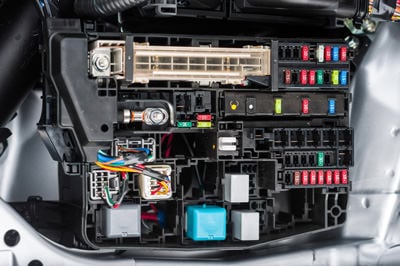Expert solutions for mechanical engineering industry support to meet your business.
Expert solutions for mechanical engineering industry support to meet your business.
Blog Article
Top Tips for Effective Electric System Troubleshooting
Fixing electric systems calls for a systematic approach, based in a thorough understanding of electrical concepts and safety and security procedures. The nuances of reliable troubleshooting expand beyond plain technological knowledge; recognizing just how to record searchings for and focus on security can substantially influence outcomes.
Understand the Fundamentals
Understanding the fundamentals of electric systems is necessary for effective troubleshooting, as a strong structure allows specialists to diagnose and fix problems more effectively. An extensive grasp of electrical principles, such as voltage, present, resistance, and power, is vital in determining the source of problems. Voltage is the electric prospective distinction that drives current with a circuit, while resistance opposes the circulation of existing, affecting the general performance of the system.
Familiarity with circuit components, consisting of resistors, capacitors, diodes, and changes, is likewise critical. Each component plays a distinctive duty in circuit habits and can impact performance when malfunctioning. Furthermore, understanding collection and identical circuit arrangements is vital, as these arrangements influence the distribution of voltage and current within the system.
Specialists need to be mindful of potential hazards, such as shock and short circuits, to apply risk-free troubleshooting techniques. By understanding these fundamental principles, specialists improve their capability to carry out efficient diagnostics and repair work, inevitably leading to enhanced performance and integrity of electric systems (electrical system troubleshooting).
Gather Necessary Tools
Effective troubleshooting of electric systems requires the appropriate collection of devices to diagnose and deal with issues precisely. Essential devices consist of a multimeter, which determines voltage, present, and resistance, enabling for accurate analyses of electrical parts.
In addition, shielded hand tools such as screwdrivers, pliers, and cord pole dancers are important for safely adjusting electric connections. It is also suggested to have a circuit tester on hand to verify the existence of voltage in electrical outlets and cables. For even more complicated systems, a thermal imaging camera can aid detect overheating components, showing prospective failures.

Comply With an Organized Method
Having actually gathered the ideal tools, the next step in troubleshooting electric systems is to comply with an organized method. A methodical strategy guarantees that service technicians can recognize mistakes efficiently and properly, lessening downtime and avoiding unneeded fixings.
Begin by evaluating the system's schematic diagrams and specs. Comprehending the style and functional criteria will certainly provide context for detecting issues. Next off, isolate the trouble location by utilizing a process of removal. This includes checking each component methodically, beginning with the source of power and working in the direction of the load.
Make use of testing tools, such as multimeters and oscilloscopes, to gather unbiased data concerning voltage, present, and resistance at numerous factors within the system. This empirical evidence will direct your troubleshooting initiatives and assist to confirm or eliminate prospective reasons for failure.
Furthermore, think check my reference about ecological aspects that might influence the system's performance, such as temperature changes or moisture access. A comprehensive inspection of circuitry, links, and elements will ensure that all possibilities are accounted for.
Record Your Searchings For
Detailed documents is vital in the repairing process of electrical systems. This technique not only aids in comprehending the root cause of the issue but also serves as a referral for future troubleshooting initiatives.

Furthermore, preserving a log of parts changed or repair work done is very useful. This info sustains inventory management and can help assess the longevity and reliability of particular elements.
Eventually, the paperwork procedure ought to be comprehensive yet succinct, enabling very easy retrieval and review - electrical system troubleshooting. By focusing on in-depth documents, service technicians can create a useful understanding base that not just aids in current troubleshooting however likewise empowers future maintenance efforts, thus enhancing overall system reliability

Prioritize Safety And Security Steps
Recognizing the integral risks related to electrical systems is critical for making certain safety throughout troubleshooting. Electrical shock, burns, and devices damages are just a few of the possible hazards that professionals encounter. Prioritizing precaution is not just a legal commitment yet also an ethical essential that safeguards both the service technician and the surrounding environment.
Before beginning any troubleshooting job, specialists should put on proper individual protective equipment (PPE), consisting of shielded handwear covers, shatterproof glass, and flame-resistant More Help clothing. Making certain that the workspace is dry and totally free of mess can dramatically lower the risk of crashes. It is crucial to de-energize circuits prior to starting any job, validating that they are not live via the usage of a multimeter or voltage tester.
Developing clear interaction procedures with team members is additionally crucial; this makes certain that everyone is mindful of potential dangers and the status of the electric system being worked on. Last but not least, having an emergency reaction plan in position can prove very useful in case of an occurrence. By prioritizing precaution, service technicians can effectively minimize check that threats and cultivate a more secure work environment.
Verdict
Efficient electric system troubleshooting depends on a thorough understanding of basic principles and a methodical method. By collecting important tools, sticking to methodical analysis techniques, and meticulously recording searchings for, the fixing procedure comes to be more reliable and dependable. Prioritizing precaution ensures the well-being of individuals entailed and the honesty of the electric system. Carrying out these approaches will improve the repairing experience, leading to quicker resolutions and enhanced functional performance in electric systems.
Report this page